Kemp’s Ridley Sea Turtle
- April 2, 2024
- 0 comment
The Kemp’s Ridley sea turtle, renowned for its small size and distinct olive-gray shell, holds a special place in marine conservation efforts. Found primarily in the Gulf of Mexico, these sea turtles are critically endangered, facing a multitude of threats such as habitat loss, pollution, and accidental capture in fishing gear. Their nesting sites, notably along the Gulf shores, serve as vital grounds for the continuation of their species. Despite their perilous journey from egg to adulthood, where they navigate through numerous predators, Kemp’s Ridley sea turtles play a pivotal role in marine ecosystems as predators of jellyfish and other invertebrates.

Through dedicated conservation efforts, including beach protection and nesting site monitoring, there’s hope for the recovery of these iconic creatures. With continued awareness, research, and collaborative action, we can strive to ensure a brighter future for Kemp’s Ridley sea turtles and the marine environments they inhabit.
| Specification | Description |
|---|---|
| Scientific Name | Lepidochelys kempii |
| Common Name | Kemp’s Ridley Sea Turtle |
| Average Length | Approximately 2 feet (60 cm) |
| Average Weight | 75 to 100 pounds (34 to 45 kg) |
| Shell Structure | Olive-gray with a rounded shape |
| Coloration | Dark-colored as juveniles, lightening with age |
| Habitat | Primarily Gulf of Mexico, western Atlantic Ocean |
| Nesting Sites | Gulf shores, particularly in Tamaulipas, Mexico |
| Diet | Carnivorous, feeding on crustaceans, mollusks, jellyfish, and fish |
| Conservation Status | Critically endangered |
| Threats | Habitat loss, pollution, accidental capture in fishing gear |
| Reproduction | Females return to nesting sites to lay eggs; clutch size around 100 eggs |
| Role in Ecosystem | Predators of jellyfish, maintaining ecosystem balance |
| Conservation Efforts | Beach protection, nesting site monitoring, fishing regulations |
| Educational Significance | Flagship species for marine conservation |
Kemp’s Ridley Sea Turtle: An Endearing Icon of Marine Conservation

Kemp’s Ridley sea turtle, scientifically known as Lepidochelys kempii, stands as one of the most critically endangered species among sea turtles. Named after Richard Kemp, who first discovered the species in the Gulf of Mexico in 1880, Kemp’s Ridley is not only distinct in its appearance but also holds immense ecological significance. In this article, we’ll delve into the fascinating world of Kemp’s Ridley sea turtles, exploring their physical characteristics, habitat, feeding habits, reproductive behavior, conservation status, and more.
Physical Characteristics
Size and Weight
Kemp’s Ridley sea turtles, revered for their enchanting presence in the ocean’s depths, boast a modest stature compared to their marine counterparts. Measuring around 2 feet in length and weighing between 75 to 100 pounds, these remarkable creatures captivate marine enthusiasts with their diminutive yet formidable physique. Despite their relatively small size, Kemp’s Ridley sea turtles exude a sense of grace and resilience as they navigate the vast expanses of their oceanic habitats.


Shell Structure
A defining feature of Kemp’s Ridley sea turtles lies in the intricate architecture of their shell, or carapace. Adorned in hues of olive-gray, their carapace is not merely a protective shield but a testament to millions of years of evolution. With a rounded shape and five pairs of costal scutes, Kemp’s Ridley sea turtles showcase a harmonious blend of form and function. Each scute, meticulously arranged, serves as a testament to their resilience against the ebb and flow of oceanic currents.
Coloration
Embarking on a journey from the shores of infancy to the vast expanse of the open sea, Kemp’s Ridley sea turtles undergo a captivating transformation in coloration. As juveniles, they don a cloak of darkness, with a carapace adorned in deep, somber hues. However, as they mature, a gradual metamorphosis ensues, culminating in a vibrant display of olive-gray splendor. This evolution in coloration serves not only as a hallmark of maturity but also as a testament to the indomitable spirit of these remarkable creatures.
Habitat and Distribution
Nesting Sites
Nestled along the sun-kissed shores of the Gulf of Mexico, Kemp’s Ridley sea turtles find solace in the tranquil embrace of their nesting sites. Among these sanctuaries, the pristine beaches of Tamaulipas, Mexico, stand as beacons of hope for the continuation of their species. Here, amidst the soft, sandy dunes, female Kemp’s Ridley sea turtles return year after year to partake in the ancient ritual of nesting. With meticulous precision, they dig nests in the warm embrace of the sand, laying their precious eggs before returning to the azure depths of the ocean.

These nesting sites, imbued with a sense of sacredness, serve as cradles of life for the next generation of sea turtle hatchlings, ensuring the perpetuation of their lineage for generations to come.
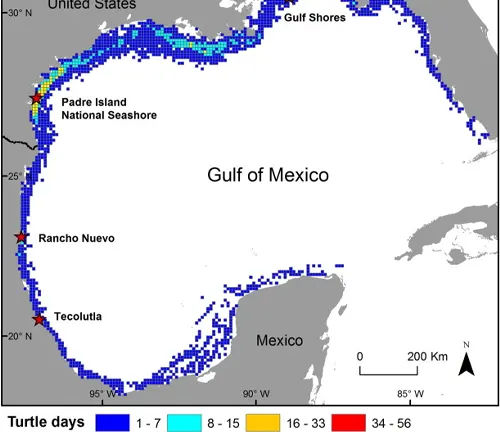
Migration Patterns
Embarking on a journey fraught with peril and adventure, Kemp’s Ridley sea turtles traverse vast distances in search of bountiful feeding grounds and suitable habitats. Following the rhythm of the ocean currents, they navigate with unerring precision, guided by the celestial cues of the stars above. From the tranquil waters of the Gulf of Mexico to the bustling shores of the eastern United States, their migration patterns paint a tapestry of resilience and adaptability.
Along the way, they encounter a myriad of challenges, from natural predators to human-induced obstacles. Yet, with an unwavering determination, they press onward, embodying the spirit of perseverance in the face of adversity.
Global Distribution
Beyond the shores of their beloved Gulf of Mexico, Kemp’s Ridley sea turtles embark on a journey that spans the vast expanse of the world’s oceans. With a global distribution that extends from the warm tropical waters of the Caribbean to the frigid currents of the North Atlantic, they are ambassadors of the seas, traversing diverse ecosystems with ease. From the sandy beaches of Florida to the rocky shores of Nova Scotia, Kemp’s Ridley sea turtles leave an indelible mark on the marine landscapes they inhabit. Their presence serves as a reminder of the interconnectedness of the world’s oceans and the importance of conservation efforts that transcend borders.
Feeding Habits
Diet Composition
Beneath the azure depths of the ocean, Kemp’s Ridley sea turtles embark on a gastronomic odyssey, feasting upon a diverse array of delectable delicacies. Their diet composition, meticulously curated by millions of years of evolution, reflects a delicate balance of carnivorous cravings and marine marvels. Crustaceans, mollusks, jellyfish, and fish form the cornerstone of their culinary repertoire, providing essential nutrients and sustenance for their journey through the briny depths

Each morsel, carefully selected and devoured with gusto, nourishes their bodies and fuels their relentless pursuit of survival in the ever-changing marine environment.
Foraging Behavior
With a keen eye and a voracious appetite, Kemp’s Ridley sea turtles embark on foraging expeditions that rival the most seasoned culinary connoisseurs. Employing a combination of instinct and ingenuity, they scour the ocean floor in search of delectable delights, utilizing their powerful jaws to crush shells and capture elusive prey. Their foraging behavior is a testament to their adaptability and resourcefulness, as they navigate through underwater landscapes teeming with life.
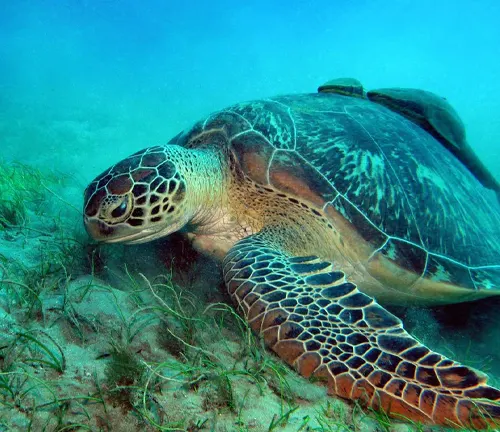
From the labyrinthine reefs of coral kingdoms to the sandy plains of the seabed, Kemp’s Ridley sea turtles employ a diverse range of foraging tactics to secure their next meal. With each successful hunt, they reaffirm their status as masters of the marine realm, forging a symbiotic relationship with the ocean that sustains them.
Life Cycle and Reproduction
Mating Behavior
In the tranquil embrace of the ocean’s depths, Kemp’s Ridley sea turtles embark on a mesmerizing ballet of courtship, a testament to the timeless ritual of love and reproduction. Mating behavior among these majestic creatures is a sight to behold, characterized by elaborate displays of affection and determination. As the mating season unfolds, male Kemp’s Ridley sea turtles vie for the attention of prospective mates, engaging in spirited competitions to win the favor of their chosen companions. Through intricate dances and gentle caresses, they seek to establish bonds that will culminate in the creation of new life amidst the vast expanse of the ocean.


Nesting Process
Against the backdrop of moonlit shores, female Kemp’s Ridley sea turtles embark on a poignant pilgrimage to their ancestral nesting grounds, a timeless tradition passed down through generations. With a sense of reverence and purpose, they dig deep into the soft sands, sculpting intricate nests that will cradle their precious cargo of eggs. Each movement is imbued with a sense of urgency and determination, as they deposit clutch after clutch of eggs into the safety of their sandy sanctuary. Through the ebb and flow of tides, the nesting process unfolds, a testament to the resilience and fortitude of these remarkable creatures.
Hatchling Survival
As the sun rises on the horizon, a new chapter in the life of Kemp’s Ridley sea turtles begins, as hatchlings emerge from their sandy nests and embark on a perilous journey to the sea. Guided by the light of the moon and the gentle whispers of the waves, they navigate through a gauntlet of obstacles, from treacherous predators to formidable natural barriers. With each step, they draw upon an innate sense of instinct and determination, fueled by the promise of survival and the hope of future generations. Though the path may be fraught with danger, their spirits remain unbroken, a testament to the indomitable will of Kemp’s Ridley sea turtles to persevere in the face of adversity.

Conservation Status
Threats and Challenges
As denizens of the ocean’s depths, Kemp’s Ridley sea turtles face a myriad of threats and challenges that endanger their very existence. Habitat loss, pollution, and climate change loom large on the horizon, casting a shadow of uncertainty over the future of these majestic creatures. Accidental capture in fishing gear, depletion of prey species, and predation by natural predators further compound the challenges they must overcome. Against this backdrop of adversity, Kemp’s Ridley sea turtles stand as resilient symbols of survival, navigating through treacherous waters in search of sanctuary and solace.
Conservation Efforts
In the face of mounting threats, dedicated conservation efforts have been launched to safeguard the future of Kemp’s Ridley sea turtles. From beach protection initiatives to nesting site monitoring programs, conservationists work tirelessly to mitigate the impact of human activities on sea turtle populations. Fishing regulations, habitat restoration projects, and public awareness campaigns serve as cornerstones of these conservation efforts, rallying communities around the world to unite in defense of these magnificent creatures. Through collaborative action and unwavering commitment, we strive to create a world where Kemp’s Ridley sea turtles can thrive in harmony with their marine habitats.
Success Stories
Despite the challenges they face, Kemp’s Ridley sea turtles have shown remarkable resilience in the face of adversity. Conservation success stories abound, from the recovery of nesting populations to the rehabilitation of injured individuals. Through the tireless efforts of conservationists and the unwavering support of communities, these success stories serve as beacons of hope in an uncertain world. By harnessing the power of collective action and innovation, we can pave the way for a brighter future where Kemp’s Ridley sea turtles can once again flourish in the wild.
Role in the Ecosystem
Keystone Species
Kemp’s Ridley sea turtles play a pivotal role in marine ecosystems as keystone species, exerting a profound influence on the balance and health of their habitats. As voracious predators of jellyfish and other invertebrates, they help regulate populations and maintain ecological equilibrium. Their presence serves as a linchpin in the intricate web of life beneath the waves, ensuring the stability and resilience of marine ecosystems for generations to come.
Impact on Marine Ecosystems
The impact of Kemp’s Ridley sea turtles reverberates throughout marine ecosystems, shaping the dynamics of populations and communities in profound ways. By controlling the abundance of prey species, they help prevent overpopulation and maintain biodiversity. Their foraging behavior also promotes the health of seagrass beds and coral reefs, providing essential habitats for countless marine species. Through their interactions with the marine environment, Kemp’s Ridley sea turtles leave an indelible mark on the ecosystems they inhabit, highlighting the interconnectedness of all living beings in the oceanic realm.
Human Interaction and Threats
Fishing Activities
Accidental capture in fishing gear, particularly in Despite their protected status, Kemp’s Ridley sea turtles continue to face threats from human activities such as fishing. Accidental capture in fishing gear, particularly in shrimp trawls, poses a significant risk to sea turtle populations, leading to injury, drowning, and death. Bycatch reduction measures, such as the use of turtle excluder devices (TEDs) and circle hooks, are crucial for mitigating this threat and ensuring the survival of Kemp’s Ridley sea turtles in the face of fishing activities.hrimp trawls, poses a significant threat to Kemp’s Ridley sea turtles.
Pollution
Marine pollution poses a grave threat to the health and survival of Kemp’s Ridley sea turtles, contaminating their habitats and food sources with toxic chemicals and debris. Plastic pollution, in particular, poses a deadly risk, as sea turtles may ingest plastic bags and other debris, leading to digestive blockages and starvation. Oil spills and chemical pollutants further exacerbate the problem, poisoning sea turtles and disrupting their reproductive cycles. Through concerted efforts to reduce plastic usage, improve waste management practices, and enforce pollution regulations, we can safeguard the marine environments upon which Kemp’s Ridley sea turtles depend.
Climate Change
Climate change poses a formidable challenge to the survival of Kemp’s Ridley sea turtles, altering their habitats and disrupting their life cycles in unpredictable ways. Rising temperatures, changing ocean currents, and sea level rise threaten to inundate nesting beaches and degrade critical habitat. Shifts in weather patterns and oceanographic conditions may also affect the availability of prey species and alter migration routes, further complicating the challenges faced by sea turtles. By addressing the root causes of climate change through mitigation and adaptation strategies, we can help ensure a future where Kemp’s Ridley sea turtles can thrive in a changing world.
Different Species
Loggerhead Sea Turtle
(Caretta caretta)
Known for their large heads and powerful jaws, loggerhead sea turtles inhabit oceans worldwide, primarily nesting along the southeastern coast of the United States.


Green Sea Turtle
(Chelonia mydas)
Recognizable for their greenish-colored fat deposits and smooth carapace, green sea turtles are found in tropical and subtropical waters around the world.
Hawksbill Sea Turtle
(Eretmochelys imbricata)
Named for their distinctive hooked beaks, hawksbill sea turtles are known for their vibrant shell patterns. They primarily inhabit coral reefs in tropical regions.


Leatherback Sea Turtle
(Dermochelys coriacea)
The largest of all sea turtles, leatherback sea turtles lack a hard shell and instead have a leathery skin. They have a global distribution and are known to undertake long-distance migrations.
Olive Ridley Sea Turtle
(Lepidochelys olivacea)
Similar in appearance to Kemp’s Ridley sea turtles, olive ridley sea turtles are slightly larger and have a more extensive global distribution. They are known for their synchronized mass nesting events known as arribadas.

Frequently Asked Questions (FAQs)
- How did Kemp’s Ridley sea turtles get their name?
Kemp’s Ridley sea turtles are named after Richard Kemp, who first discovered the species in the Gulf of Mexico in 1880. - What makes Kemp’s Ridley sea turtles unique compared to other sea turtle species?
Kemp’s Ridley sea turtles are the smallest and most critically endangered of all sea turtle species, with distinctive olive-gray shells and nesting behaviors. - How many Kemp’s Ridley sea turtles are left in the wild?
While exact population numbers are difficult to determine, Kemp’s Ridley sea turtles are considered one of the rarest sea turtle species, with estimates suggesting only a few thousand individuals remaining in the wild. - What are the major threats to Kemp’s Ridley sea turtles?
Major threats to Kemp’s Ridley sea turtles include habitat loss, pollution, climate change, accidental capture in fishing gear, and predation by natural predators. - How do conservationists monitor Kemp’s Ridley sea turtle populations?
Conservationists use various methods such as satellite tracking, beach patrols, and nesting surveys to monitor Kemp’s Ridley sea turtle populations and assess their conservation status. - What is being done to protect Kemp’s Ridley sea turtles?
Conservation efforts include habitat preservation, nesting site protection, reducing pollution, implementing fishing regulations, and raising public awareness about the species’ conservation needs. - Do Kemp’s Ridley sea turtles migrate?
Yes, Kemp’s Ridley sea turtles undertake long-distance migrations between nesting and feeding grounds, particularly along the Gulf of Mexico and eastern coast of the United States. - How do Kemp’s Ridley sea turtles reproduce?
Female Kemp’s Ridley sea turtles return to their natal beaches to lay eggs, digging nests in the sand where they deposit clutches of around 100 eggs before returning to the sea. - What is the success rate of Kemp’s Ridley sea turtle hatchlings?
The survival rate of Kemp’s Ridley sea turtle hatchlings is relatively low, with only a fraction of eggs successfully hatching and surviving to adulthood due to predation and other environmental factors. - What role do Kemp’s Ridley sea turtles play in marine ecosystems?
Kemp’s Ridley sea turtles are keystone species, playing a crucial role in maintaining the health and balance of marine ecosystems by controlling populations of prey species such as jellyfish.” - How can individuals contribute to the conservation of Kemp’s Ridley sea turtles?
Individuals can support conservation efforts by reducing plastic pollution, supporting sustainable fishing practices, participating in beach clean-ups, and advocating for policies that protect sea turtle habitats.


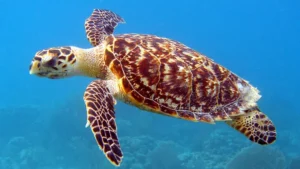
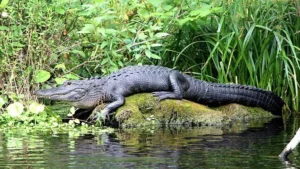
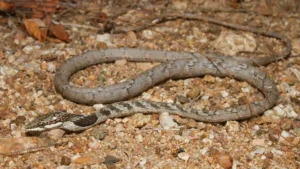

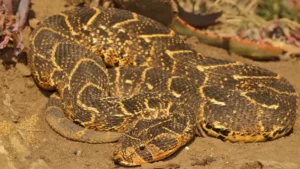
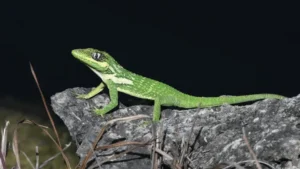
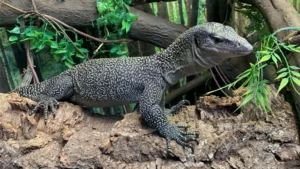
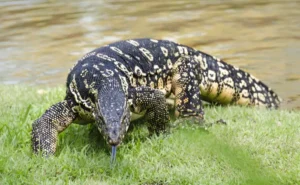
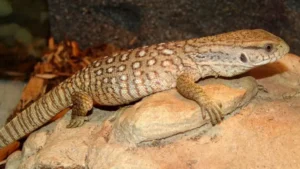

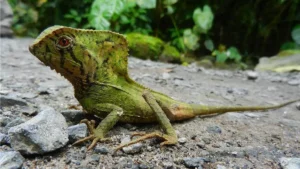

Leave your comment